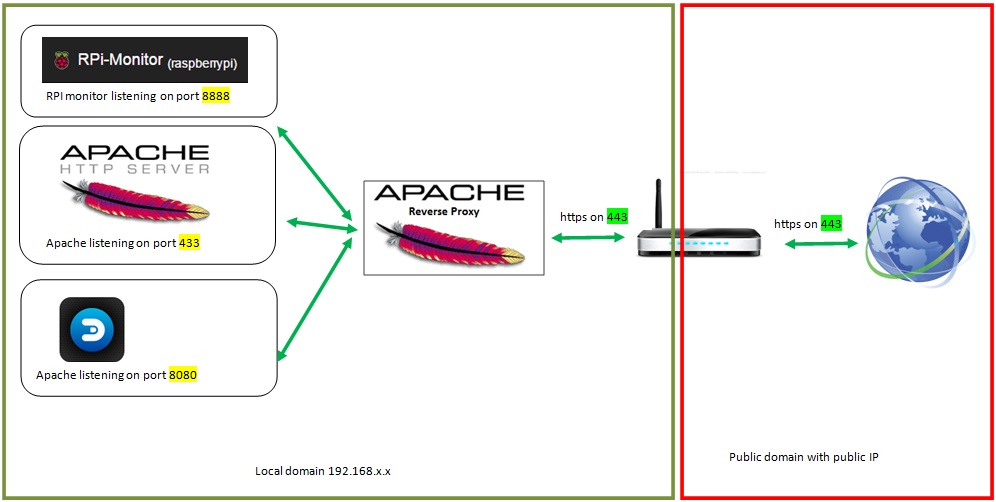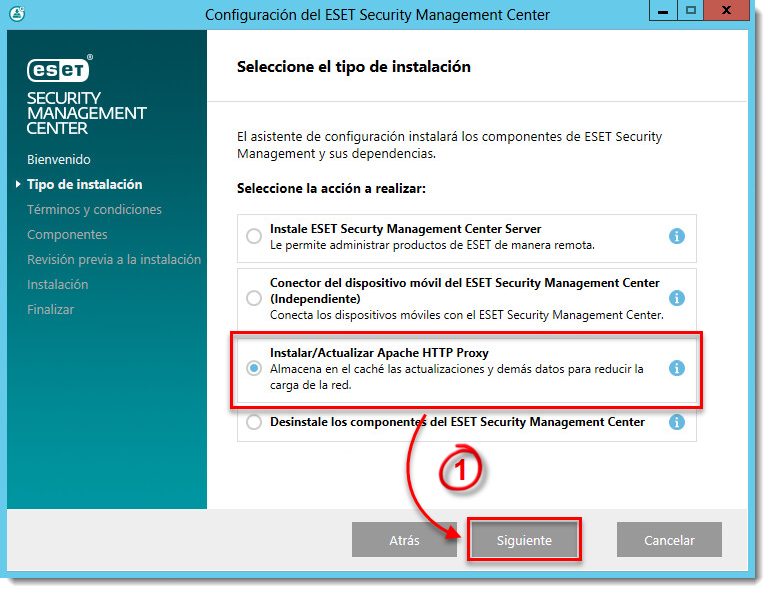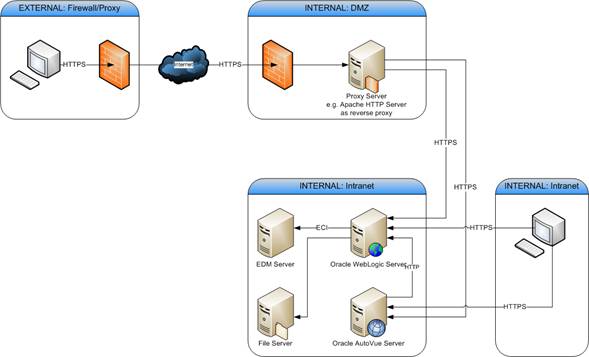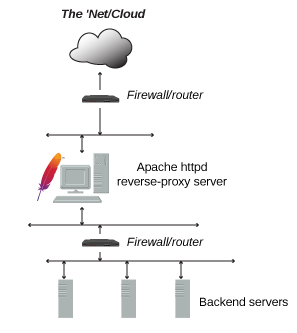Here is what I have used to access proxy autocomplete google places requests through local host on an installation of Apache including ssl support (version 2.2 for windows). Edit the apache file httpd.conf turn on the required modules.
- Reverse Proxy is a gateway and it's appears to the client like an ordinary web server. In this article, i will show quick steps to setup and configure Apache Reverse Proxy server. We need to add reverse proxy configuration into configuration to tell apache where it should be redirecting.
- I want to configure my Apache proxy server to redirect certain URLs so that, for example, a web browser HTTP request for www.olddomain.com gets passed to the proxy server which then routes the request to www.newdomain.com which sends a response to the proxy server which then passes it back to the web browser.
- Apache HTTP Server can be configured in both a forward and reverse proxy (also known as gateway) mode. An ordinary forward proxy is an intermediate server that sits between the client and the origin server. In order to get content from the origin server, the client sends a request to the proxy naming the origin server as the target.
Environment Variables

In addition to the configuration directives that control the behaviour of mod_proxy, there are a number of environment variables that control the HTTP protocol provider. Environment variables below that don't specify specific values are enabled when set to any value.
- proxy-sendextracrlf
- Causes proxy to send an extra CR-LF newline on the end of a request. This is a workaround for a bug in some browsers.
- force-proxy-request-1.0
- Forces the proxy to send requests to the backend as HTTP/1.0 and disables HTTP/1.1 features.
- proxy-nokeepalive
- Forces the proxy to close the backend connection after each request.
- proxy-chain-auth
- If the proxy requires authentication, it will read and consume the proxy authentication credentials sent by the client. With proxy-chain-auth it will also forward the credentials to the next proxy in the chain. This may be necessary if you have a chain of proxies that share authentication information. Security Warning: Do not set this unless you know you need it, as it forwards sensitive information!
- proxy-sendcl
- HTTP/1.0 required all HTTP requests that include a body (e.g. POST requests) to include a Content-Length header. This environment variable forces the Apache proxy to send this header to the backend server, regardless of what the Client sent to the proxy. It ensures compatibility when proxying for an HTTP/1.0 or unknown backend. However, it may require the entire request to be buffered by the proxy, so it becomes very inefficient for large requests.
- proxy-sendchunks or proxy-sendchunked
- This is the opposite of proxy-sendcl. It allows request bodies to be sent to the backend using chunked transfer encoding. This allows the request to be efficiently streamed, but requires that the backend server supports HTTP/1.1.
- proxy-interim-response
- This variable takes values
RFC(the default) orSuppress. Earlier httpd versions would suppress HTTP interim (1xx) responses sent from the backend. This is technically a violation of the HTTP protocol. In practice, if a backend sends an interim response, it may itself be extending the protocol in a manner we know nothing about, or just broken. So this is now configurable: setproxy-interim-response RFCto be fully protocol compliant, orproxy-interim-response Suppressto suppress interim responses. - proxy-initial-not-pooled
- If this variable is set, no pooled connection will be reused if the client request is the initial request on the frontend connection. This avoids the 'proxy: error reading status line from remote server' error message caused by the race condition that the backend server closed the pooled connection after the connection check by the proxy and before data sent by the proxy reached the backend. It has to be kept in mind that setting this variable downgrades performance, especially with HTTP/1.0 clients.

- Apache HttpClient Tutorial
- Apache HttpClient Resources
- Selected Reading

A Proxy server is an intermediary server between the client and the internet. Proxy servers offer the following basic functionalities −
Firewall and network data filtering
Network connection sharing
Data caching
Using HttpClient library, you can send a HTTP request using a proxy. Follow the steps given below −
Step 1 - Create a HttpHost object
Instantiate the HttpHost class of the org.apache.http package by passing a string parameter representing the name of the proxy host, (from which you need the requests to be sent) to its constructor.
In the same way, create another HttpHost object to represent the target host to which requests need to be sent.
Step 2 - Create an HttpRoutePlanner object
The HttpRoutePlanner interface computes a route to a specified host. Create an object of this interface by instantiating the DefaultProxyRoutePlanner class, an implementation of this interface. As a parameter to its constructor, pass the above created proxy host −
Step 3 - Set the route planner to a client builder

Using the custom() method of the HttpClients class, create a HttpClientBuilder object and, to this object set the route planner created above, using the setRoutePlanner() method.

Step 4 - Build the CloseableHttpClient object
Apache Http Proxy Download
Build the CloseableHttpClient object by calling the build() method.
Step 5 - Create a HttpGetobject
Create a HTTP GET request by instantiating the HttpGet class.
Step 6 - Execute the request
One of the variants of the execute() method accepts an HttpHost and HttpRequest objects and executes the request. Execute the request using this method −
Example
Following example demonstrates how to send a HTTP request to a server via proxy. In thisexample, we are sending a HTTP GET request to google.com via localhost. We have printed the headers of the response and the body of the response.
Apache Proxypreservehost
Output
Apache Virtualhost Proxypass
On executing, the above program generates the following output −
